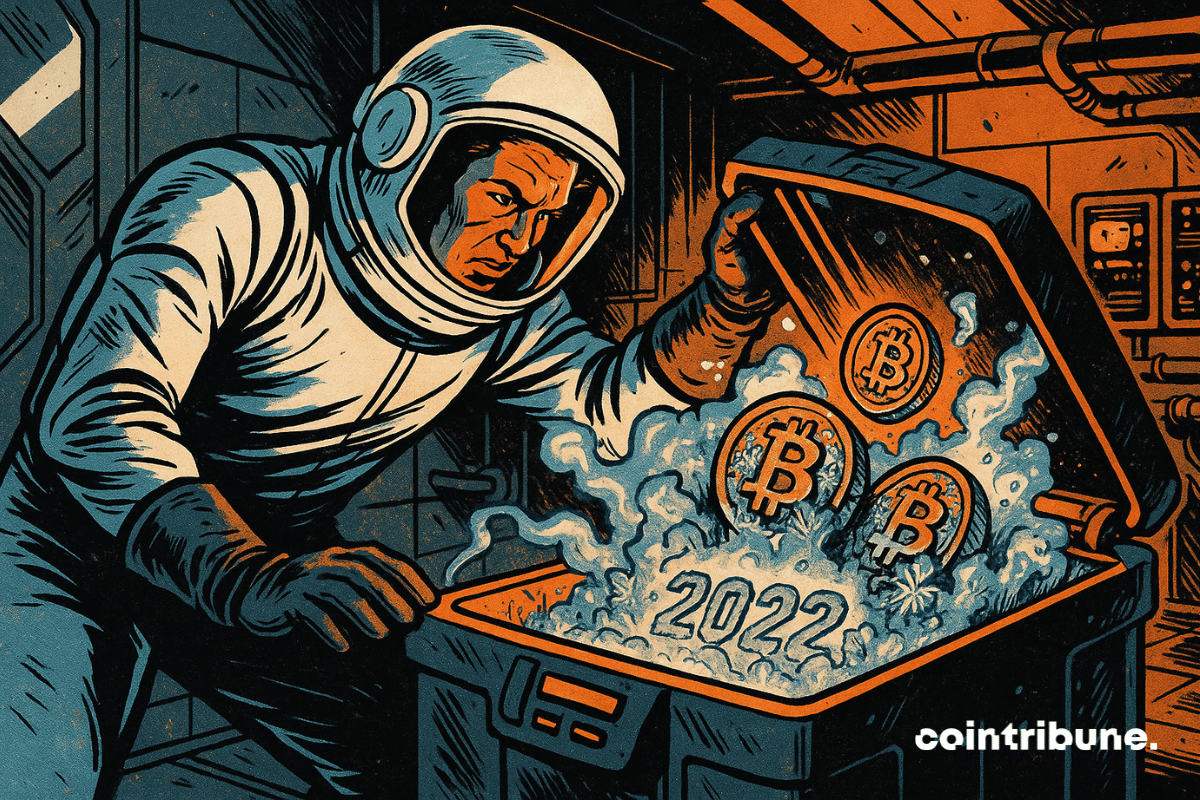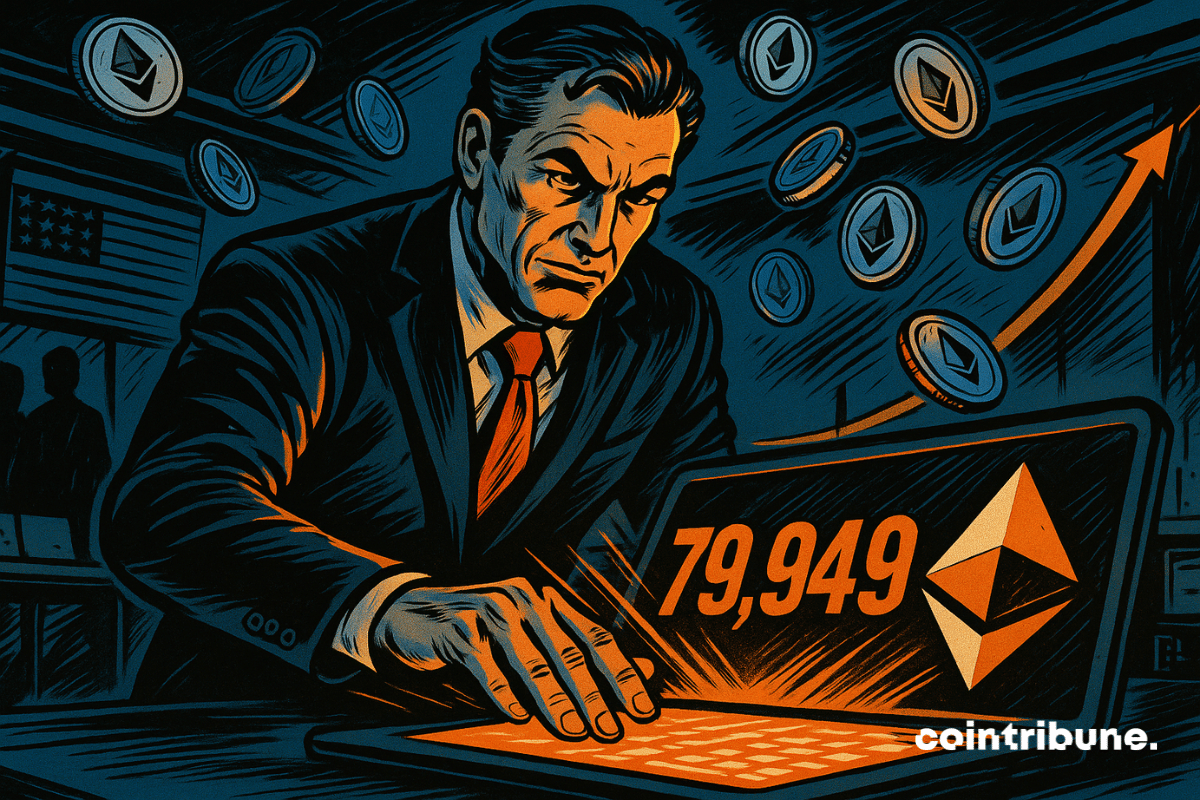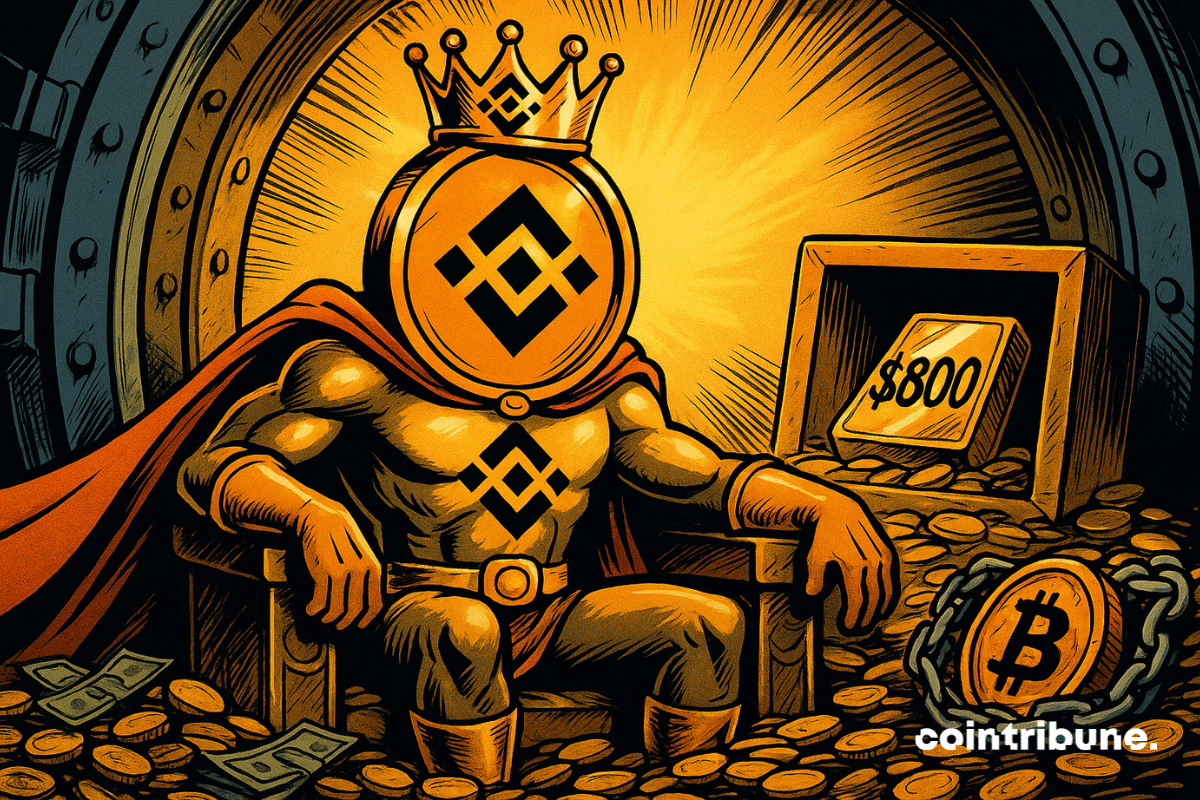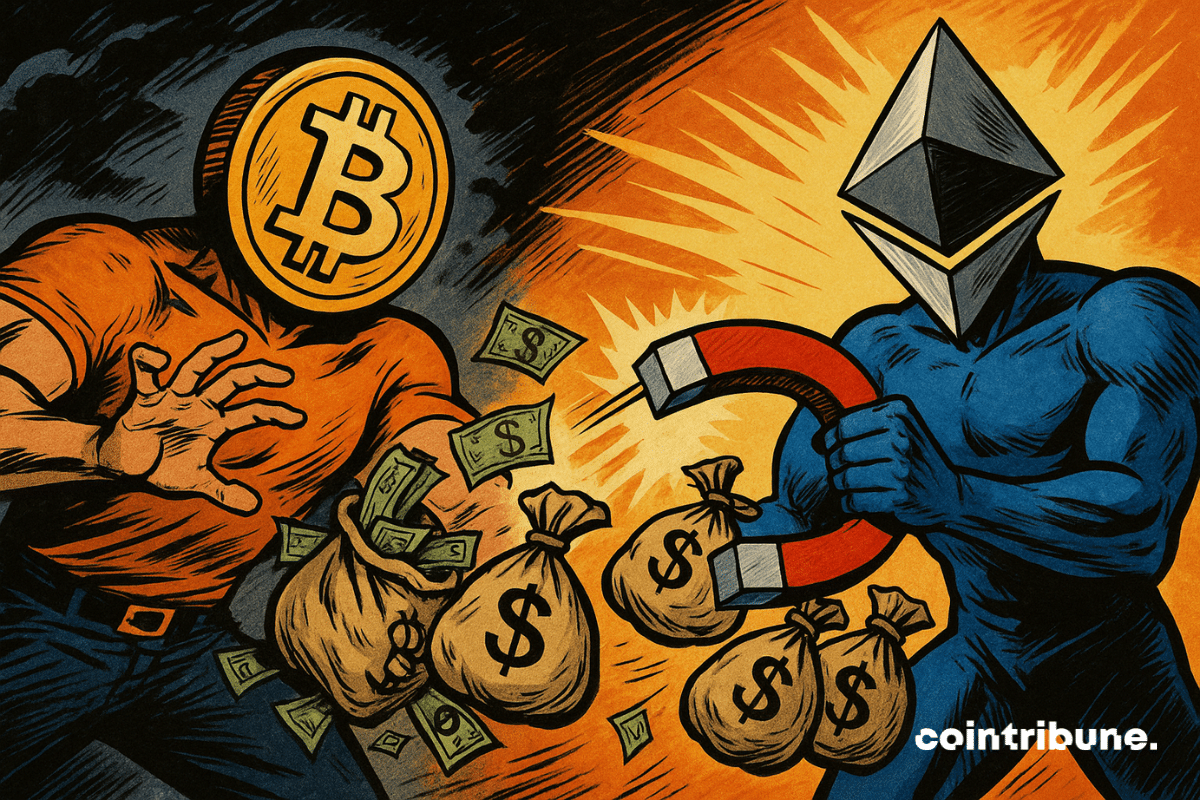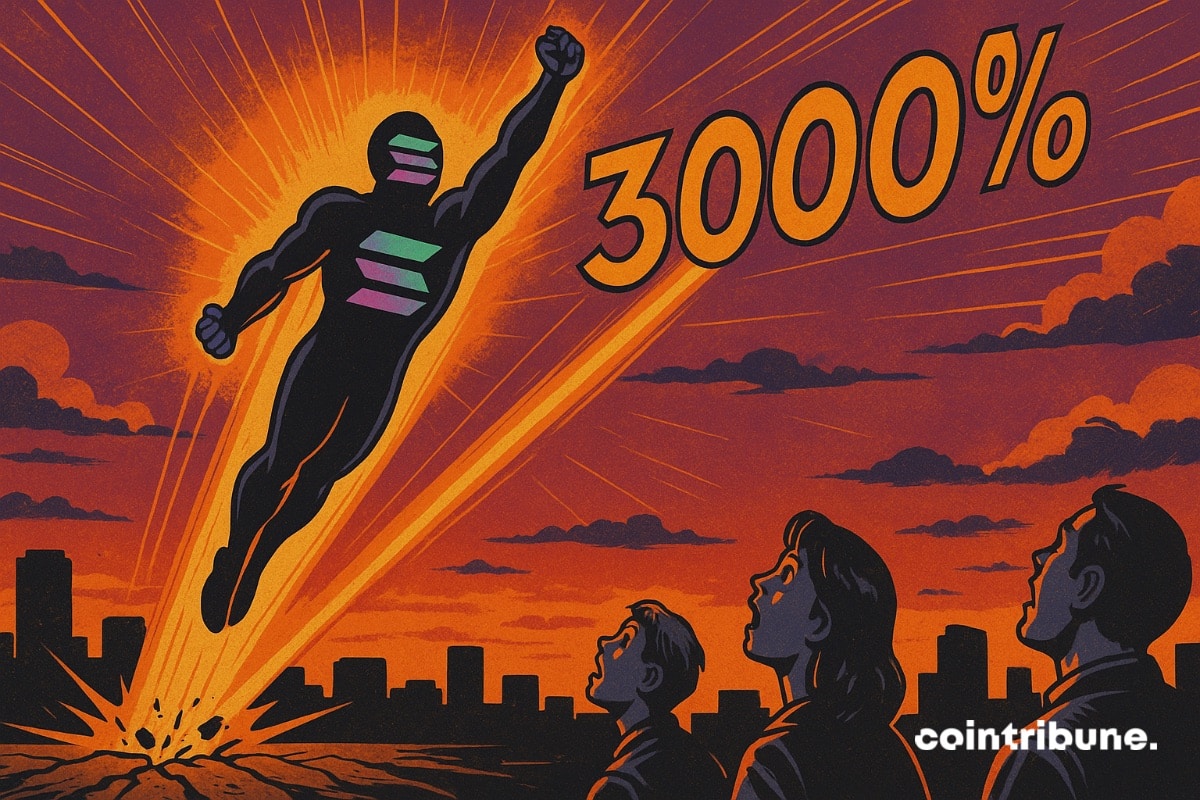It’s been a full year since spot Ethereum ETFs went live in the U.S., and the market is celebrating with a strong streak of inflows and bullish sentiment. Despite being overshadowed by Bitcoin ETFs, these funds have quietly carved out a substantial presence.
Crypto News
New record for BlackRock: its Ethereum ETF climbs to $10 billion in 251 days. All the details in this article!
On July 24, nearly a billion dollars in leveraged positions were liquidated within a few hours, triggering a wave of sales on derivative platforms. XRP, Dogecoin, Ethereum, and Solana all plummeted, caught up in an overheating mechanism fueled by massive speculative bets. A dark day that reminds us how volatility remains the rule, not the exception, in the crypto universe.
MicroStrategy continues to surprise. While most companies adjust their cash reserves with cautious investments, the firm led by Michael Saylor continues to forge a radically different path. Staying true to its "Bitcoin first" strategy, MicroStrategy has just announced a $2 billion fundraising, primarily intended for the purchase of new BTC. This is not just a financial operation: it is a manifesto. Behind this decision lies an ideological confrontation between two visions of the monetary world. And MicroStrategy, once again, chooses its side unambiguously.
Faced with the persistent uncertainties of traditional markets, cryptocurrencies are establishing themselves as a strategic refuge. In 2025, flows into these assets reached an unprecedented threshold: 60 billion dollars injected since January, according to JPMorgan. This astonishing 50% increase since May confirms an unprecedented institutional dynamic. Such a turning point redefines the balance of capital and illustrates the increasing normalization of cryptocurrencies in the financial universe.
For several sessions, the bitcoin market has been showing signs of increasing tension. An unusual accumulation of liquidity above the price and a rapid increase in its dominance are reigniting speculation. In the shadows of the charts, short sellers and eager buyers are engaged in a tactical duel. For several technical analysts, the stage is set: a massive short squeeze now seems inevitable.
Ethereum wavers between past profits and the cold sweats of summer: an explosive cocktail mixing variable rates, rapid predictions, and a DeFi that grits its teeth.
Chris Larsen, co-founder of Ripple, moves 175 million dollars worth of XRP at a high price. Could this massive movement signify a strategic dumping? Discover the implications of this action on the crypto market and the risks for investors.
JPMorgan Chase is reportedly exploring a new lending product that would allow clients to borrow against their crypto holdings. According to sources cited by the Financial Times, the U.S. banking giant is in internal discussions to launch crypto-collateralized loans, potentially as early as next year. The plan would let clients use cryptocurrencies such as Bitcoin, Ethereum, or even crypto-focused ETFs as collateral in exchange for cash or credit. While still in its exploratory phase, the product would be JPMorgan’s clearest signal yet that it is taking crypto seriously.
Bitcoin’s rally is starting to cool, and eyes are now turning to altcoins. With volumes soaring, Binance is right in the thick of it.
Mara Holdings, one of the largest publicly traded Bitcoin mining firms, has released a bold financing plan: the company aims to raise up to $1 billion through a debt sale to support its Bitcoin acquisition strategy and operational needs.
Ethereum’s next major protocol upgrade, Fusaka, is scheduled for launch in early November. Developers aim to boost scalability and network resilience while trimming unnecessary features.
Altcoins suddenly plunge after a frenzied rally. Ethereum and XRP drop, but Bitcoin remains calm. Temporary correction or the beginning of a real reversal in crypto? Suspense.
Andrew Keys, co-founder of Ethereum-focused investment firm The Ether Machine, has reignited the ETH vs BTC debate. During his media rounds, Keys emphasized that Ethereum has significantly outperformed Bitcoin in returns over the last decade.
Every token unlock by Ripple rekindles tensions surrounding XRP. On August 1st, one billion tokens will be released from escrow, according to a well-established monthly schedule. Predictable yet always scrutinized, this movement fuels speculation about a potential market impact, as XRP attempts to breach a crucial technical threshold. In an ever-nervous crypto climate, Ripple's strategy raises as many questions as it reassures.
In a crypto market plagued by uncertainty, XRP surprises. While Bitcoin wavers and Ethereum experiences sharp fluctuations, Ripple's asset aligns bullish technical signals. Long burdened by its legal troubles, the crypto is now shaping a unique market structure, blending support stability with order book density. This atypical trajectory intrigues analysts and traders. XRP could well be gearing up for a powerful return to levels previously thought unreachable.
In just 13 days, Ethereum ETFs have captured over $4 billion. A record influx shaking up the crypto market and attracting finance giants. Discover why Ethereum could soon dominate the digital asset landscape.
Polymarket wants to launch its own stablecoin. The crypto prediction platform, which currently uses USDC for all its transactions, is considering creating its own stable currency to capture the revenues currently received by Circle. Two options are on the table: a sharing agreement with Circle or an in-house stablecoin.
The SEC seems finally ready to take a decisive step. Several Bitcoin and Ethereum ETF issuers have just filed modifications to include in-kind redemptions. A key step for these products, which could thus gain in attractiveness and tax efficiency. This long-awaited regulatory breakthrough would radically transform the attractiveness of these financial products.
Dogecoin dominates the crypto market: +75% volume and resistance at $0.27 tested! All the details in this article.
In a rapidly changing banking sector, Fortuneo is about to reach a decisive turning point. By exploring the integration of cryptocurrencies into its offerings, the French neobank is following a trend already initiated by its European competitors. This strategy is expected at a time when digital investment is becoming a new norm rather than a passing trend.
On July 22, 2025, after three years of inactivity, Elon Musk's firm transferred 1,308 BTC, amounting to 153 million dollars, to a newly activated address. An unexpected transaction, without official explanation, triggering questions and speculations. Behind this seemingly technical gesture lie much larger stakes, at the intersection of financial tensions, industrial strategy, and American contractual politics.
As regulation tightens and corporate treasuries turn to crypto, a discreet but strategic battle intensifies around Ether. By buying nearly $259 million worth of ETH in a single transaction, SharpLink Gaming gains the upper hand against BitMine Immersion Technologies. This massive acquisition reignites a competition that has now become central: the control of the largest public reserves of Ether, in a market where every crypto held by institutional hands redefines the balance of power.
While Bitcoin makes headlines, the discreet BNB is climbing quietly. An ATH that tastes of revenge? A crypto that works while others act like stars!
Latin America facing the crypto challenge: a broken staircase represents the regulatory barriers that hinder the adoption of cryptocurrencies in the region.
Conflux has launched a stablecoin backed by offshore yuan and unveiled Tree-Graph 3.0 to advance global blockchain adoption.
Bitcoin ETFs, which had previously been driven by a continuous bullish momentum, have seen $131 million evaporate. In the same breath, Ethereum ETFs welcomed a record influx of nearly $297 million. Behind these raw figures, a deeper movement is taking shape. Portfolio rebalancing, attraction to the yield from staking, or the evolution of the institutional narrative?
Solana brushes against $200 and attracts all eyes. A rare graphical signal suggests a leap to $6,000. Is this the beginning of a crypto super cycle? Find out why SOL could change everything very soon.
Ethereum’s price has posted a strong outing in July, culminating in a 2025 high amid growing interest from top industry participants. In fact, the second-largest crypto asset by valuation outpaced Bitcoin over the past week, with the latest data showing high ETH accumulation activities by several firms.
Cardano founder Charles Hoskinson has confirmed that an official audit into ADA token holdings is nearing completion, with the full report expected to be published in mid-August.
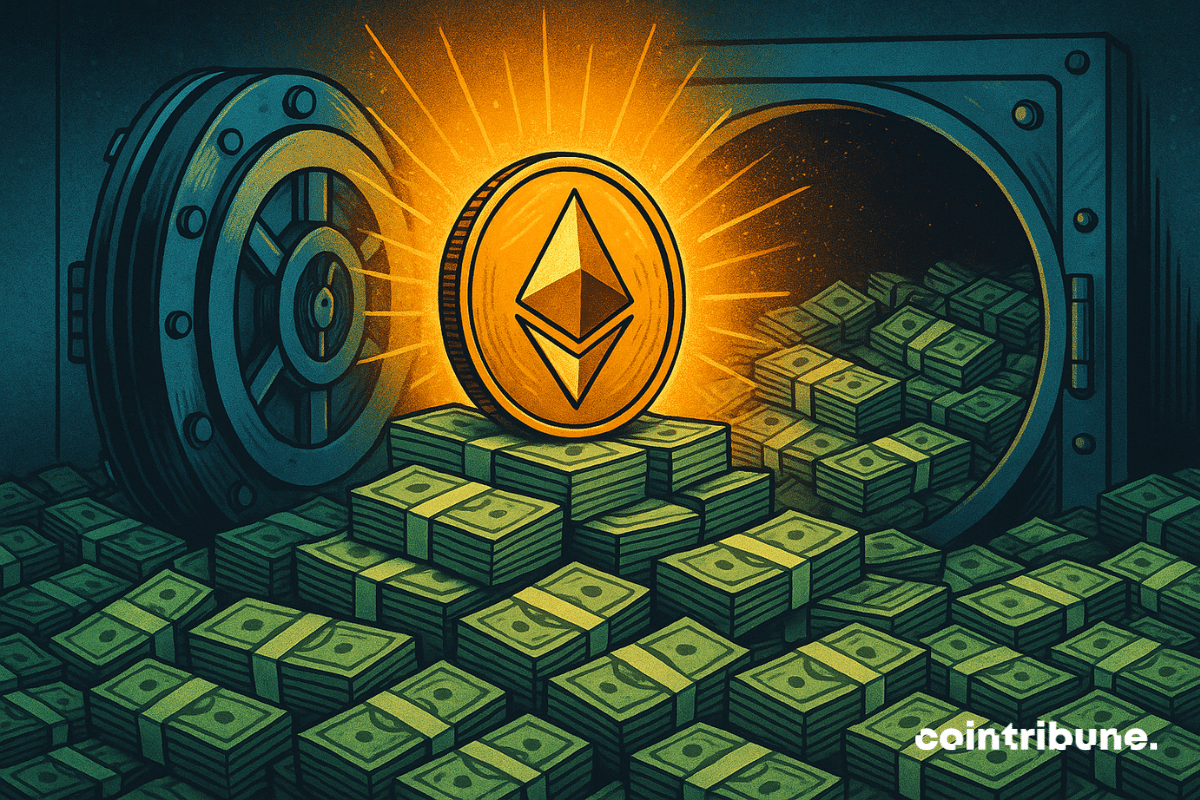

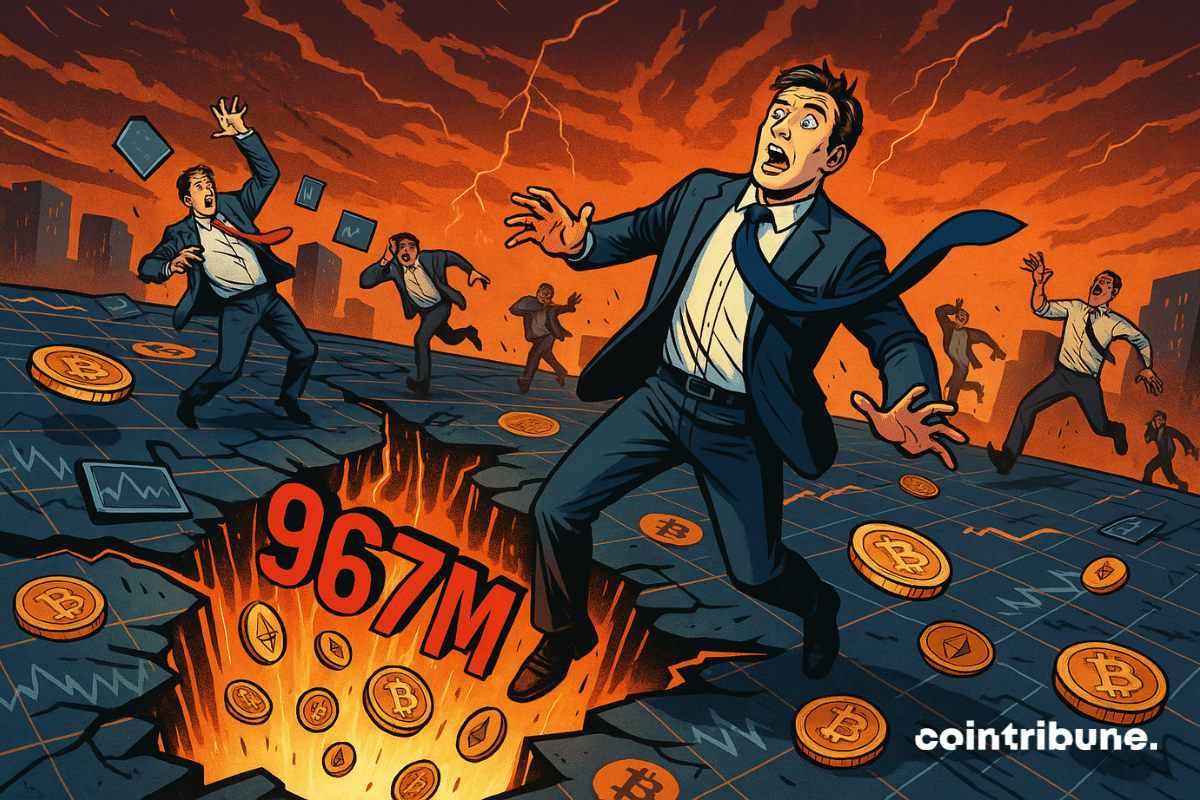

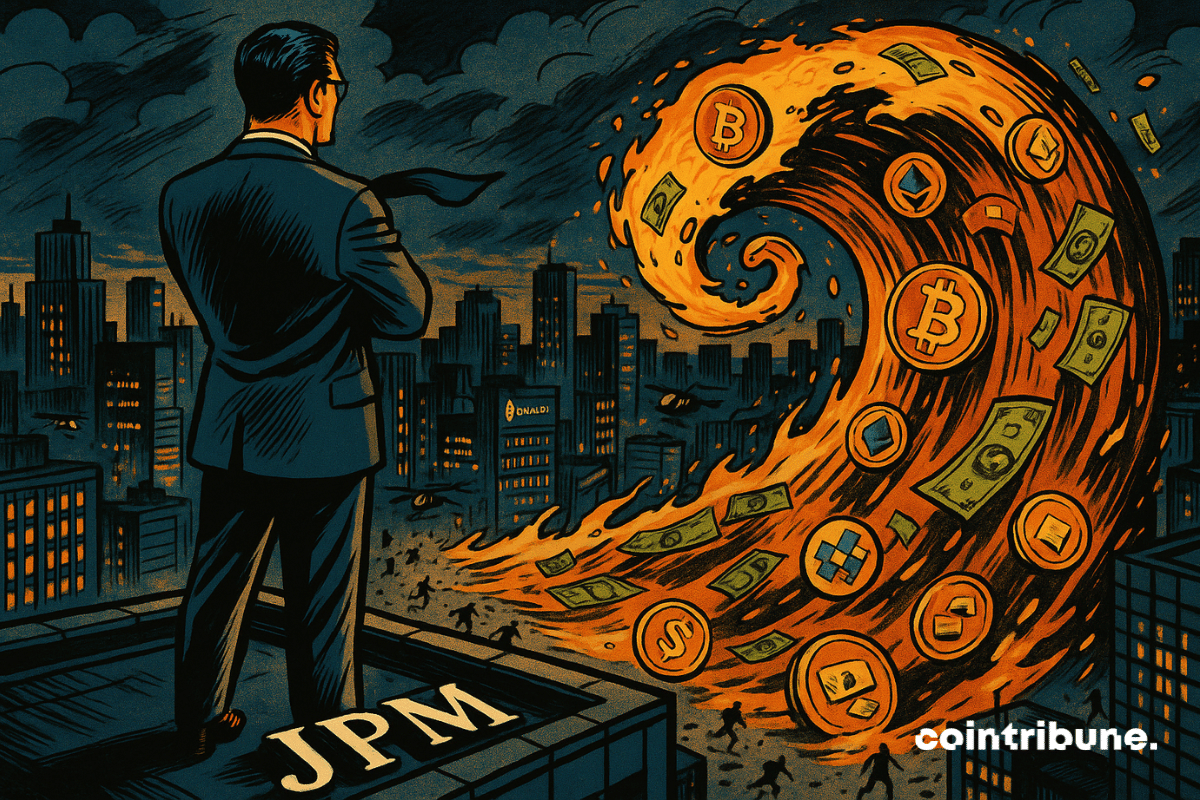
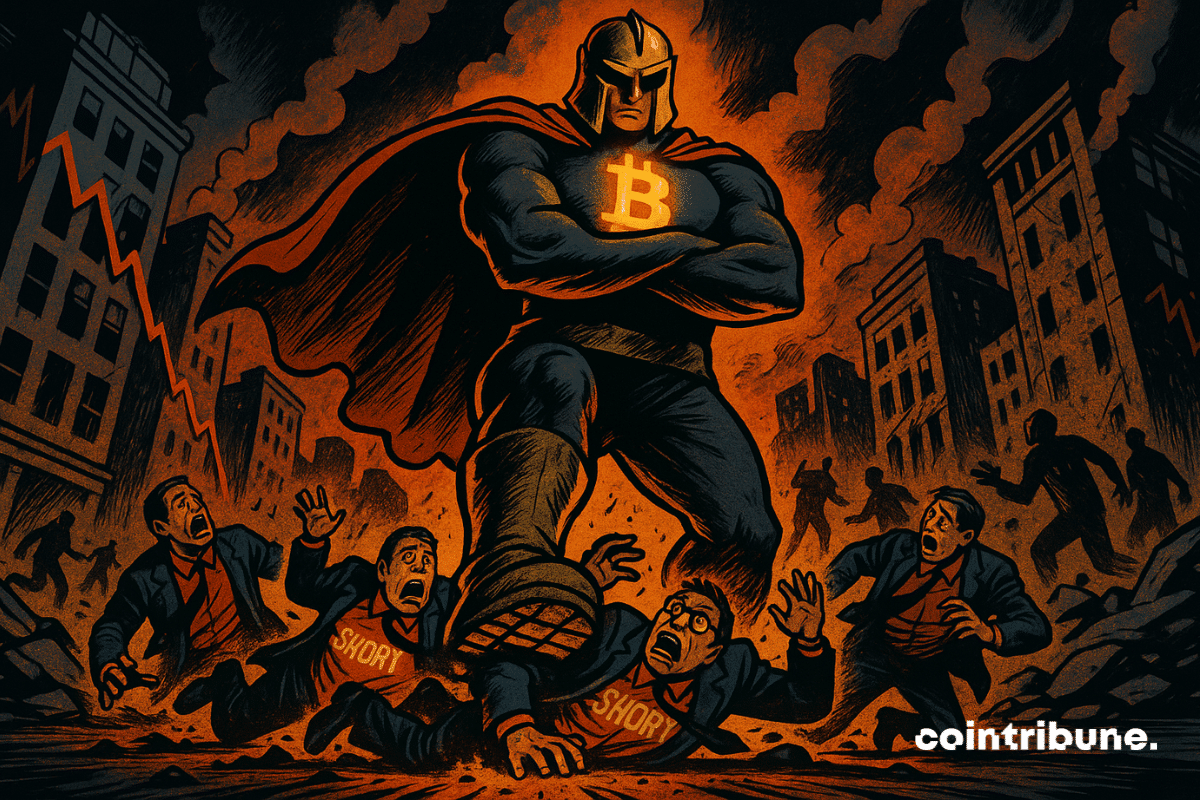
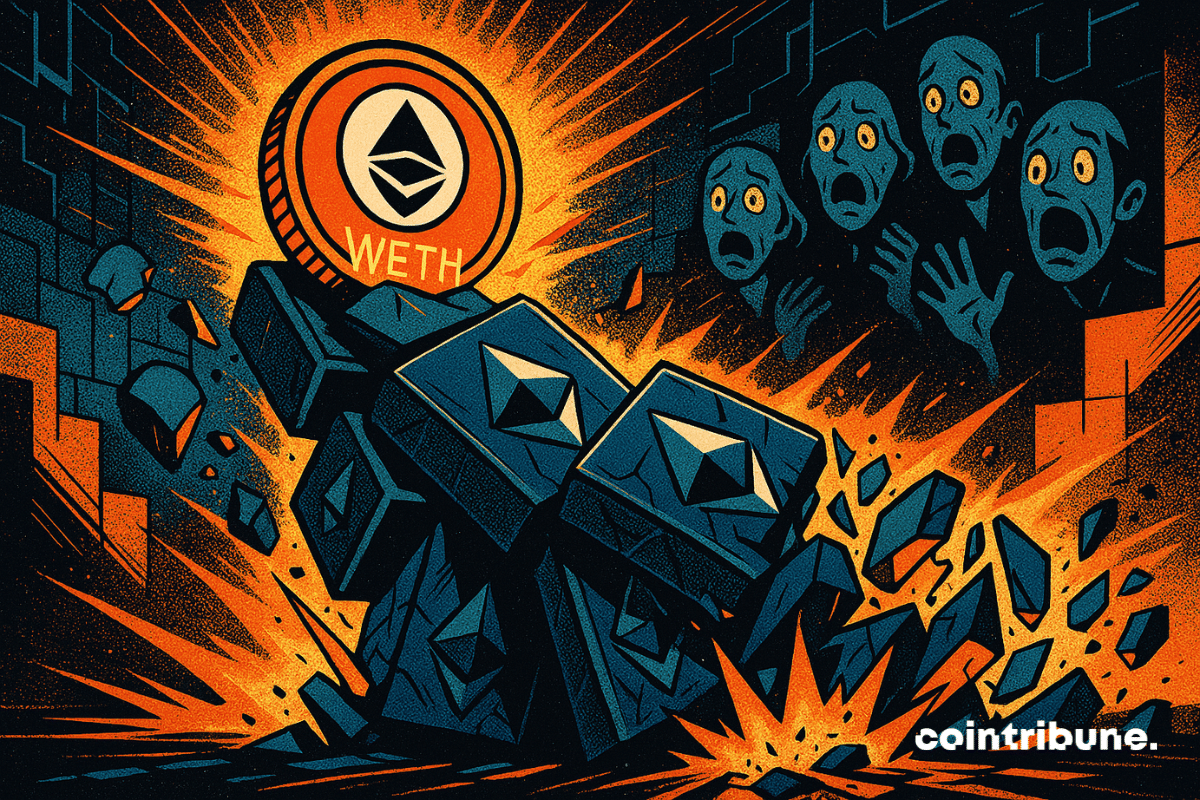
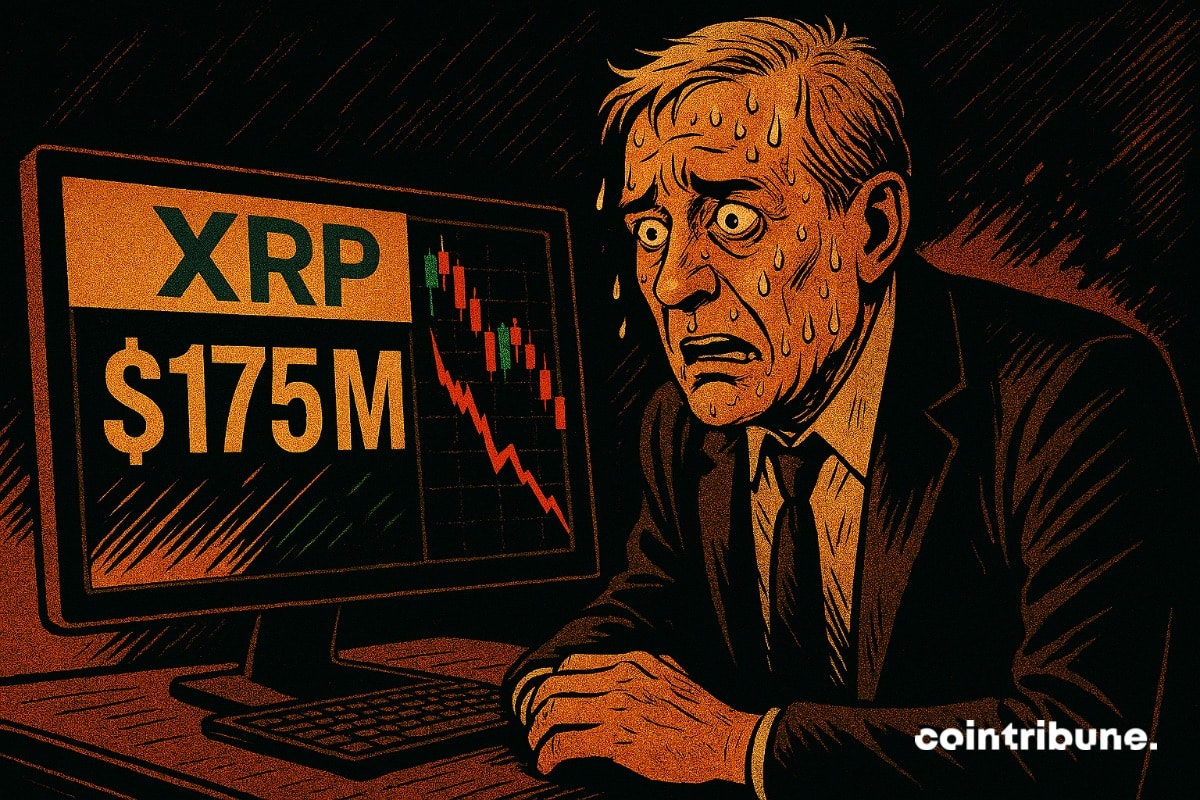
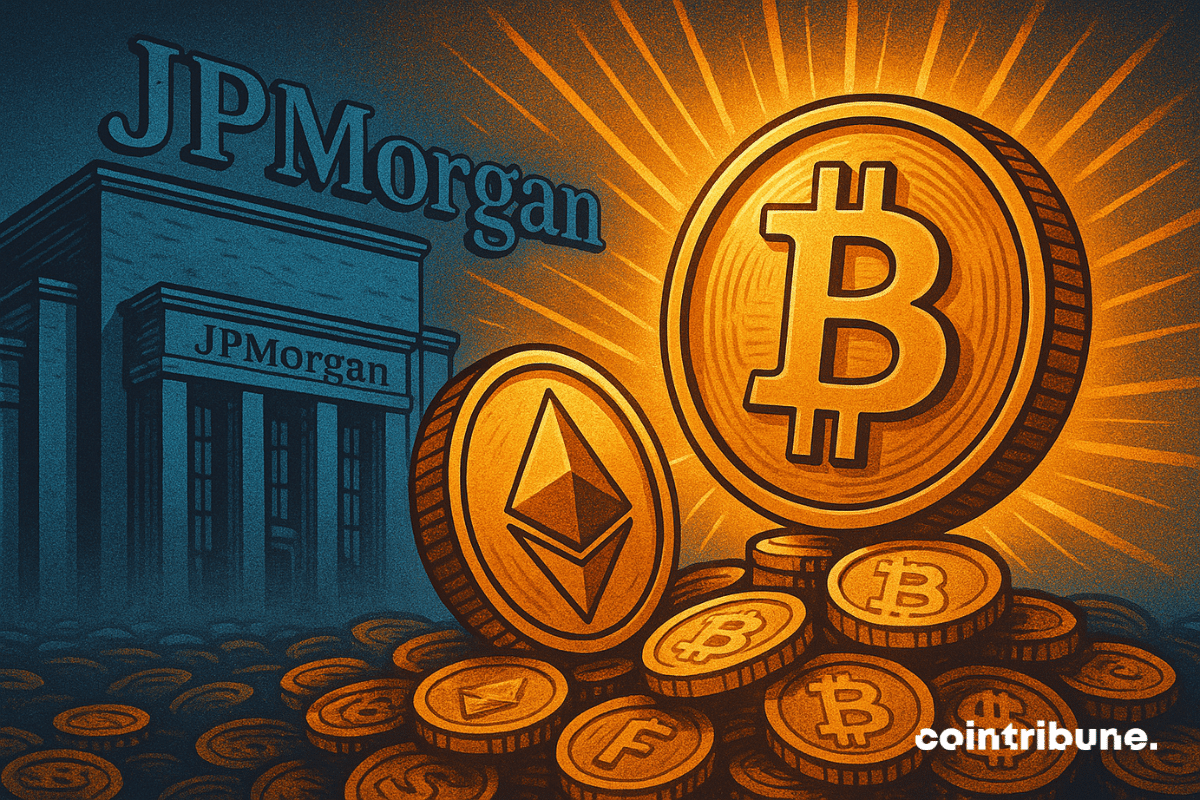
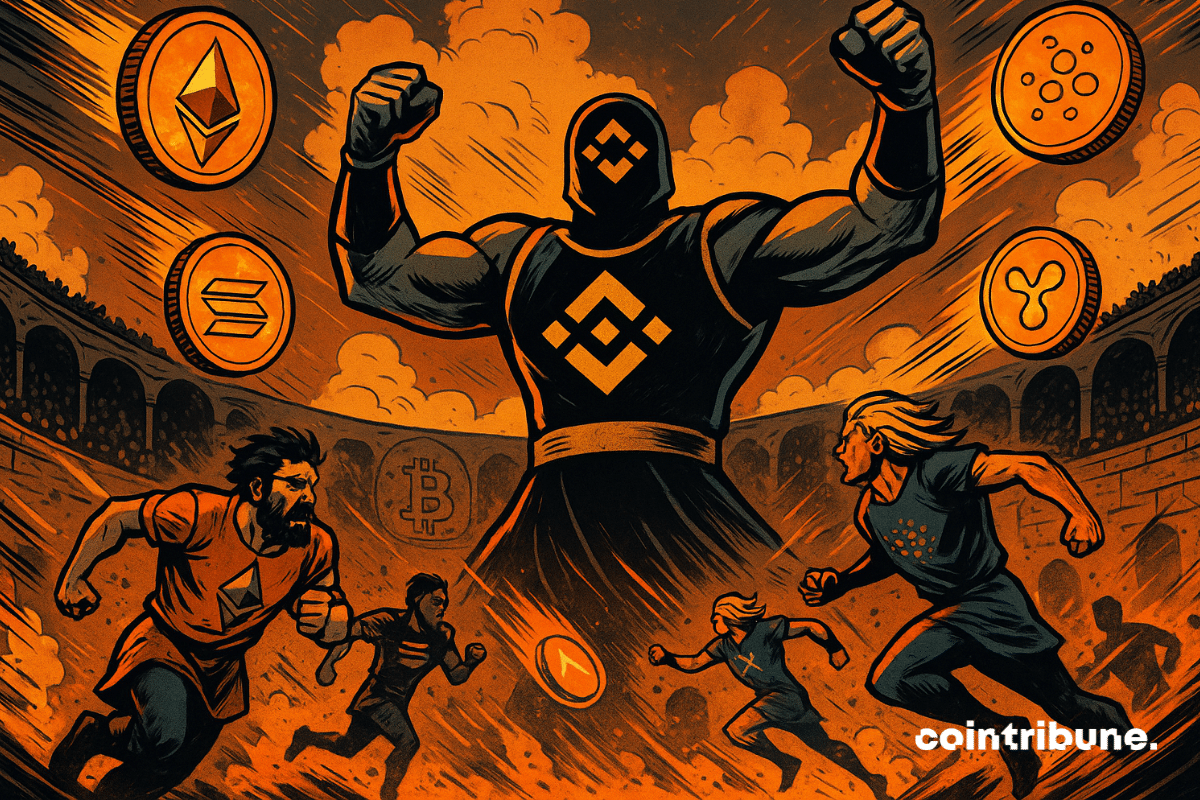


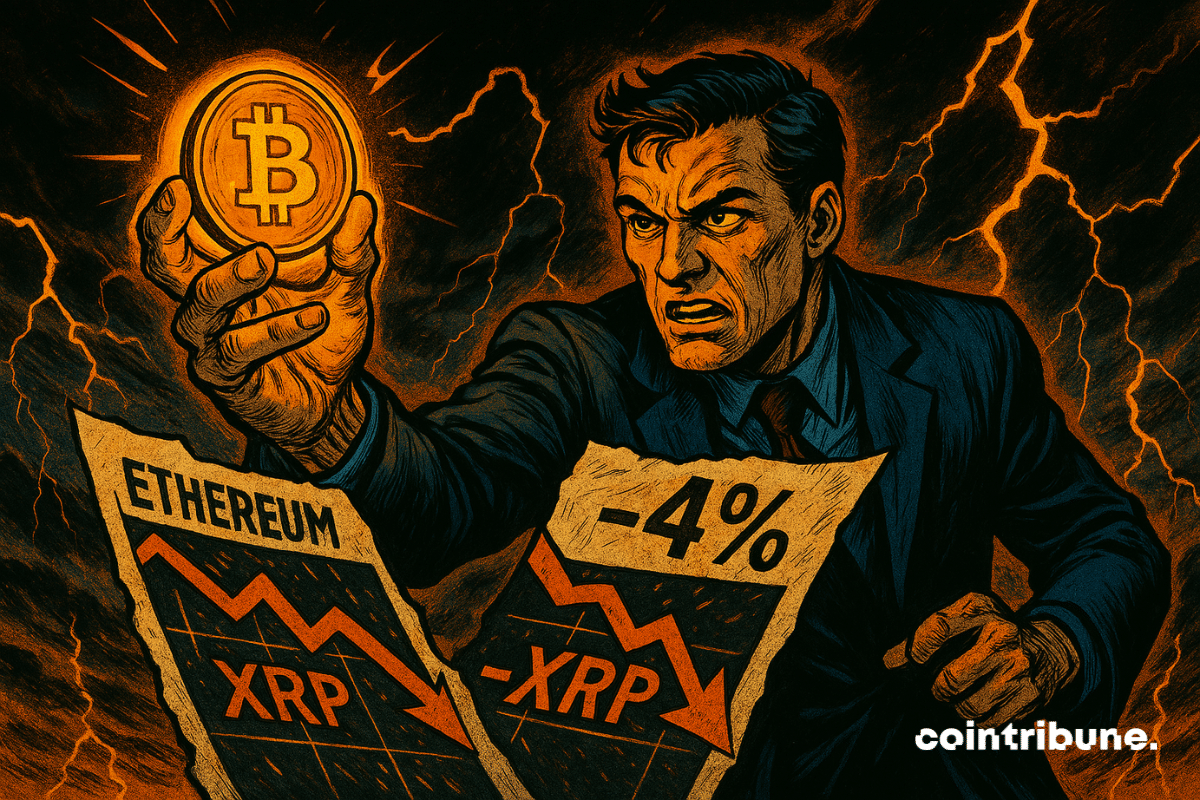
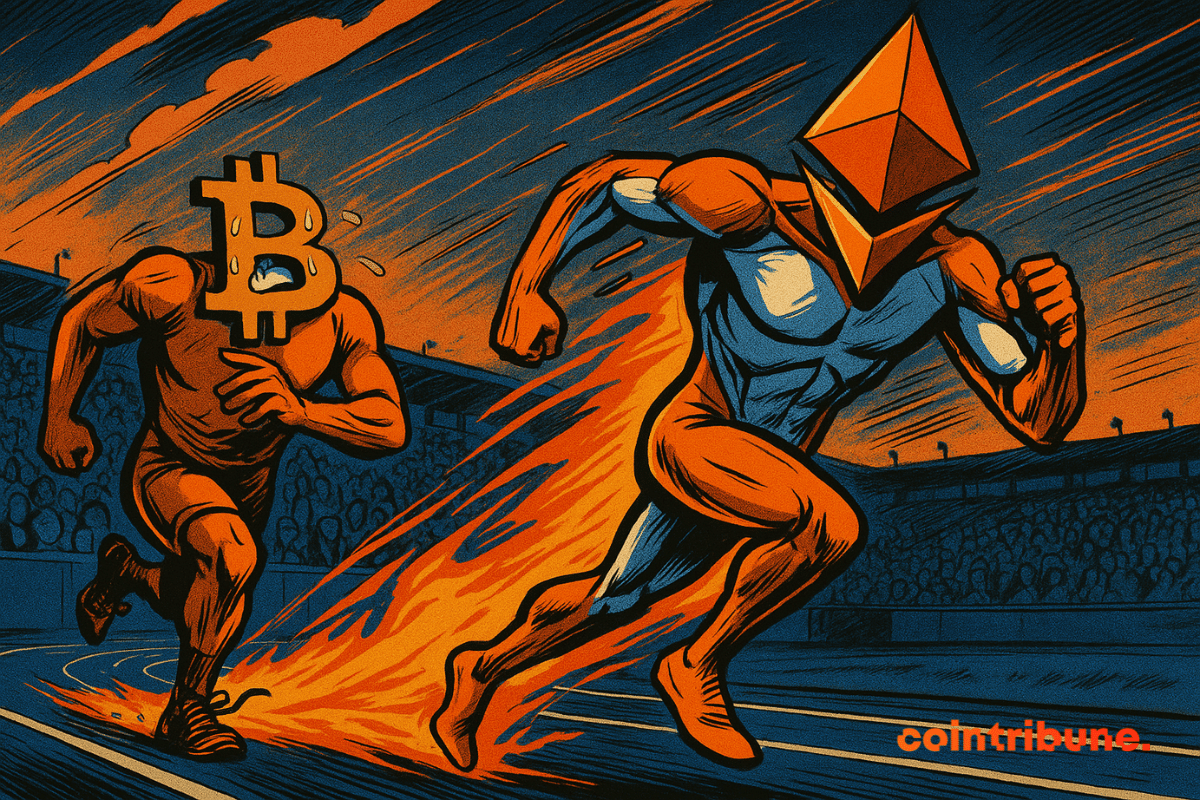

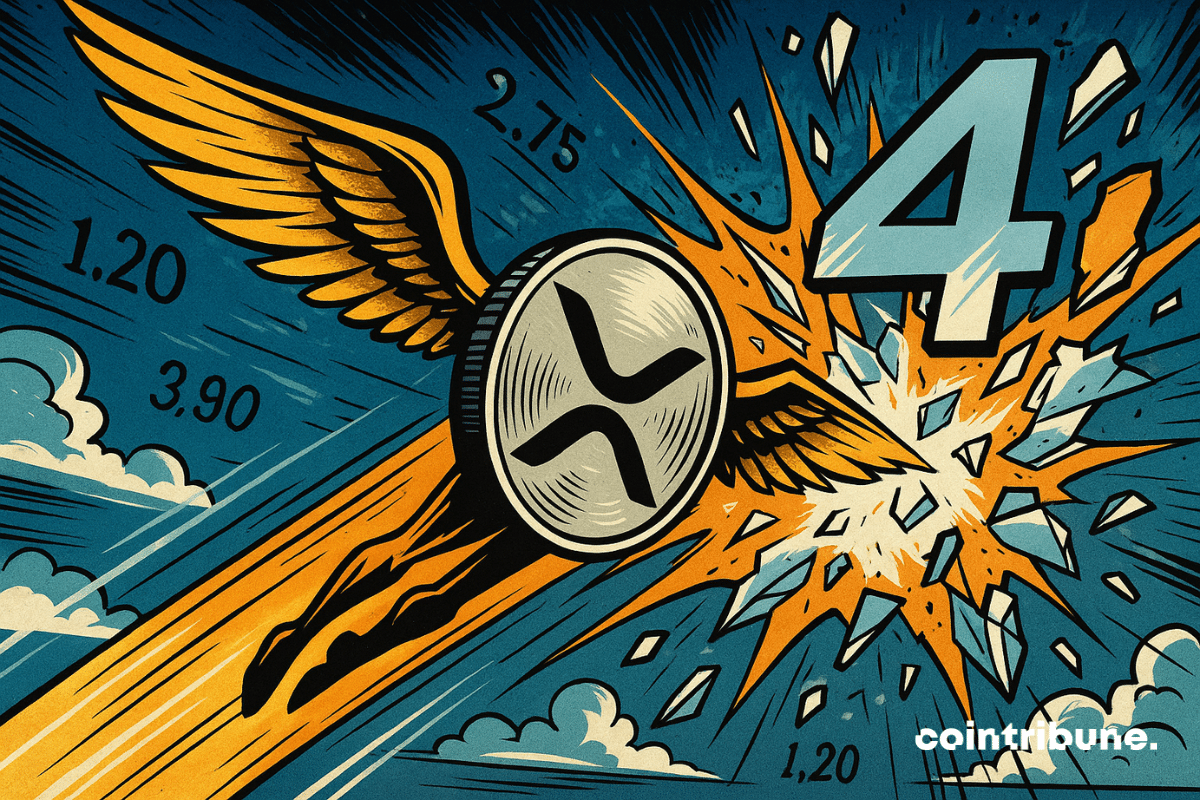
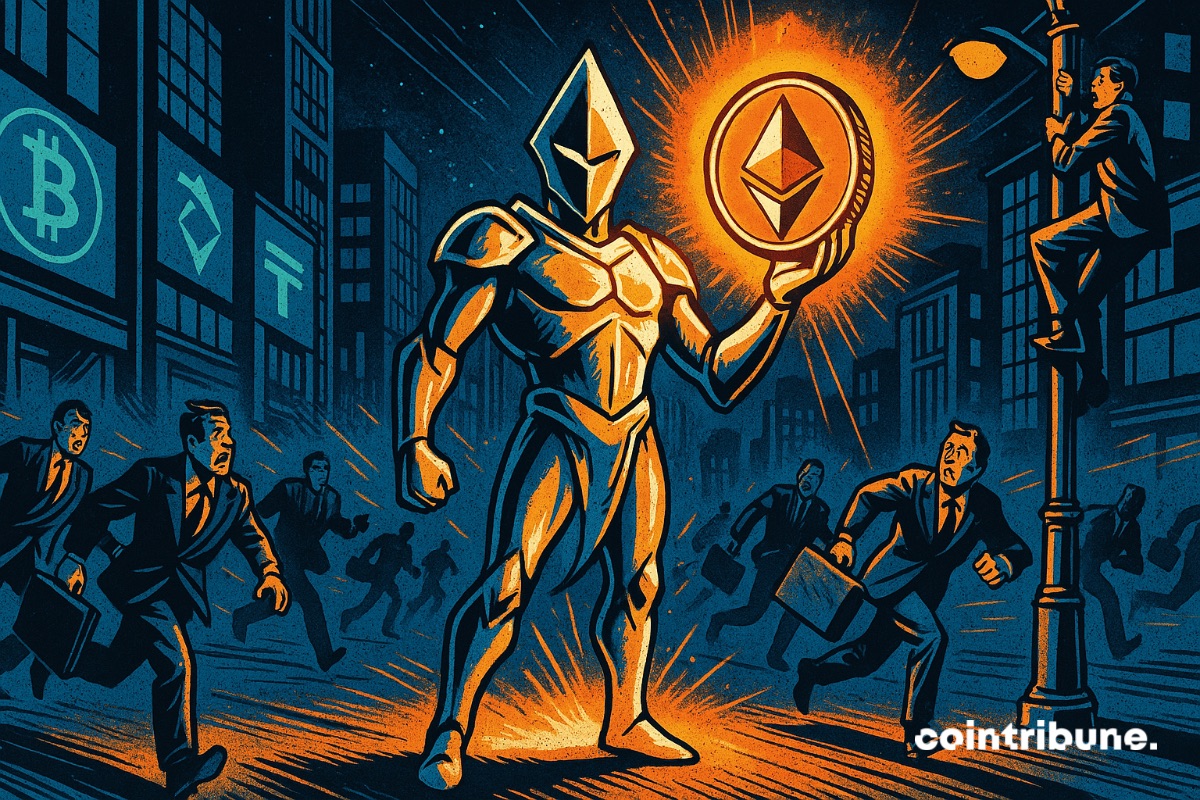
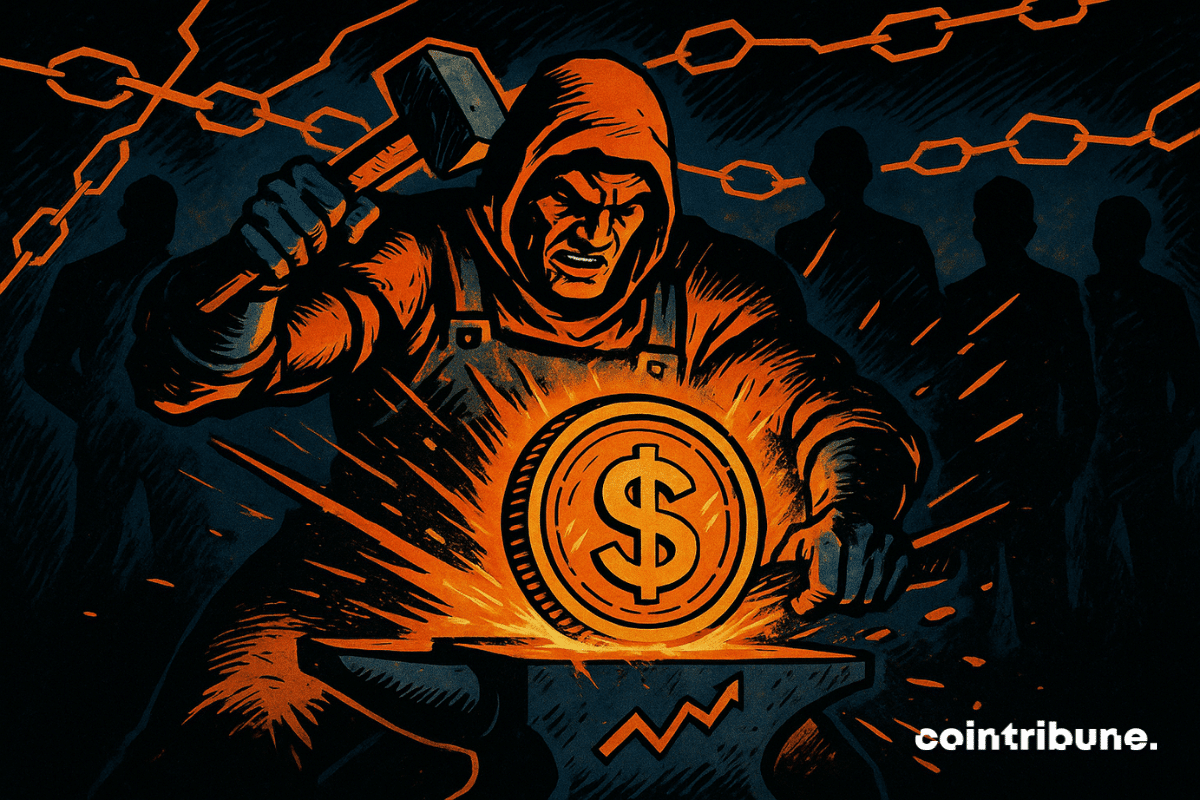
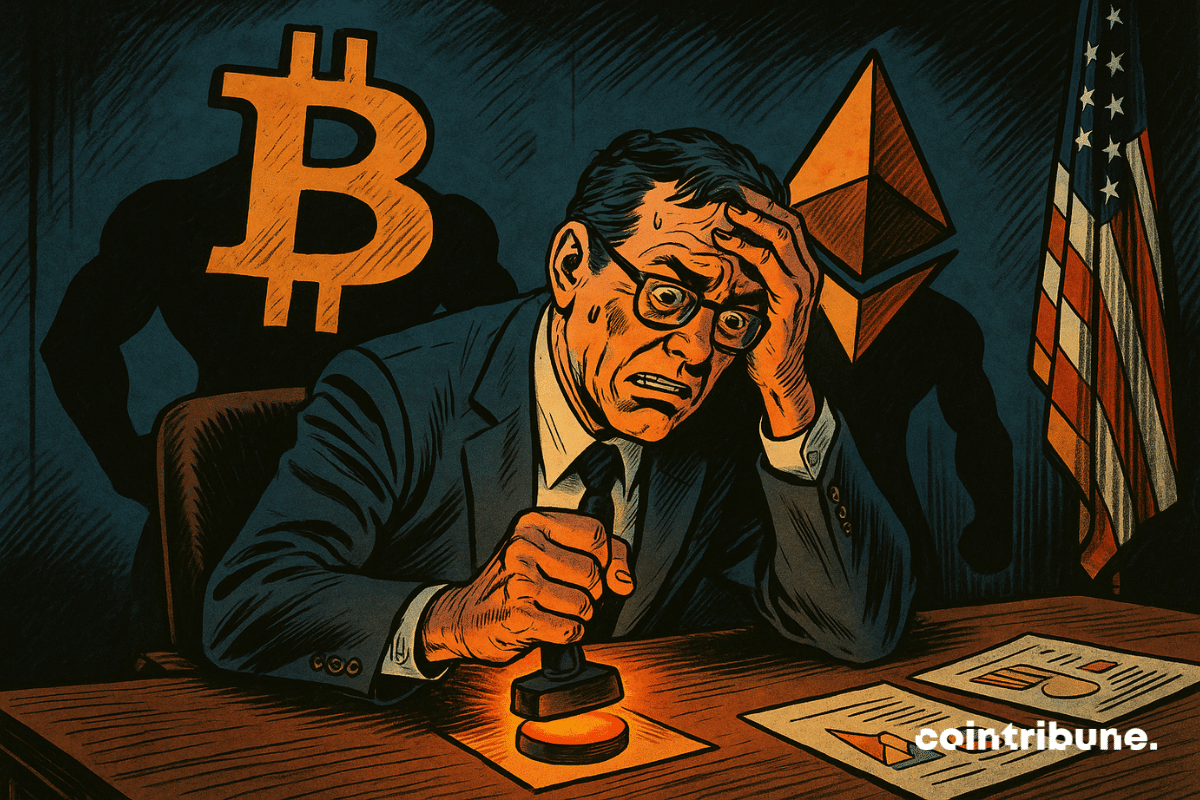
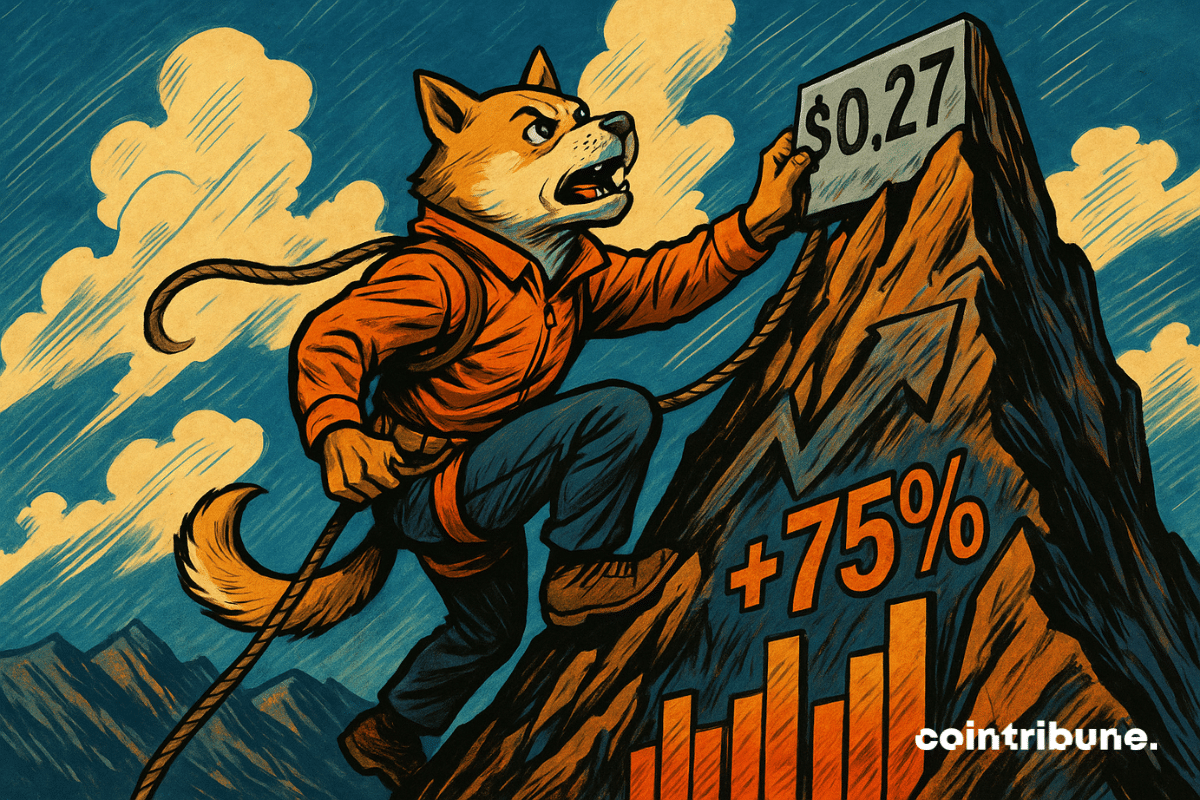 .27 on burning crypto mountain chart" class="img img--ratio w-auto h-auto" src="data:image/svg+xml,%3Csvg%20xmlns='http://www.w3.org/2000/svg'%20viewBox='0%200%200%200'%3E%3C/svg%3E" data-lazy-srcset="https://www.cointribune.com/app/uploads/2025/07/explosion-volume-crypto-dogecoin-resistance-a-franchir.png 1200w, https://www.cointribune.com/app/uploads/2025/07/explosion-volume-crypto-dogecoin-resistance-a-franchir-300x200.png 300w, https://www.cointribune.com/app/uploads/2025/07/explosion-volume-crypto-dogecoin-resistance-a-franchir-1024x683.png 1024w, https://www.cointribune.com/app/uploads/2025/07/explosion-volume-crypto-dogecoin-resistance-a-franchir-768x512.png 768w" data-lazy-sizes="(max-width: 300px) 100vw, 300px" data-lazy-src="https://www.cointribune.com/app/uploads/2025/07/explosion-volume-crypto-dogecoin-resistance-a-franchir.png">
.27 on burning crypto mountain chart" class="img img--ratio w-auto h-auto" src="data:image/svg+xml,%3Csvg%20xmlns='http://www.w3.org/2000/svg'%20viewBox='0%200%200%200'%3E%3C/svg%3E" data-lazy-srcset="https://www.cointribune.com/app/uploads/2025/07/explosion-volume-crypto-dogecoin-resistance-a-franchir.png 1200w, https://www.cointribune.com/app/uploads/2025/07/explosion-volume-crypto-dogecoin-resistance-a-franchir-300x200.png 300w, https://www.cointribune.com/app/uploads/2025/07/explosion-volume-crypto-dogecoin-resistance-a-franchir-1024x683.png 1024w, https://www.cointribune.com/app/uploads/2025/07/explosion-volume-crypto-dogecoin-resistance-a-franchir-768x512.png 768w" data-lazy-sizes="(max-width: 300px) 100vw, 300px" data-lazy-src="https://www.cointribune.com/app/uploads/2025/07/explosion-volume-crypto-dogecoin-resistance-a-franchir.png">

